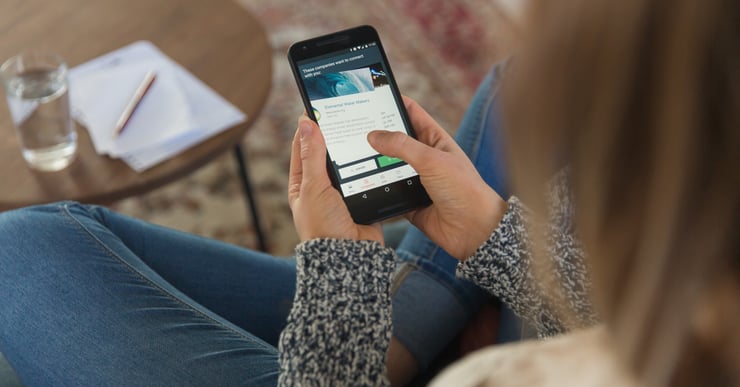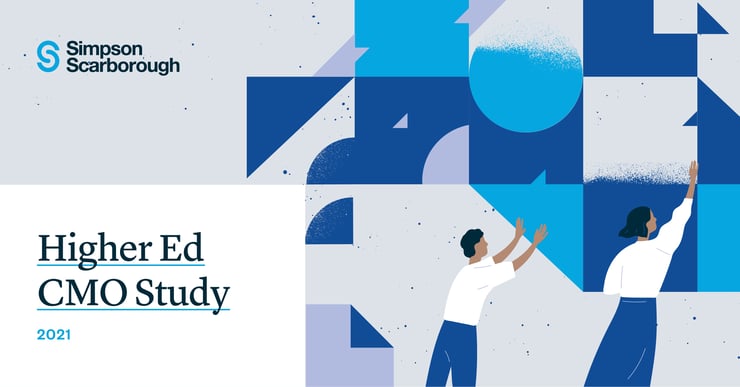Editor's Note: Our ongoing series about the Future of Higher Ed MarComms is focused on all of the topics that we believed were important pre-pandemic, but in a world permanently transformed by covid, have evolved to imperatives.
After all, one of the lasting impacts of the pandemic has been the acceleration of digital disruption across all industries — higher ed notwithstanding. But, this isn't just a time to react and adapt, it's a time to innovate and think strategically about what's next.
Gaming. It's been popular for decades but has taken a lead spot in hobby lists and quarantine pastimes in the past 12 months for people of all ages and backgrounds. Gaming unifies people around the globe, enabling them to enter new worlds, ignite their imaginations, and find some reprieve from the daily grind. Feels like a win-win during a time of incredible anxiety.
But gamification has also become part of a serious discussion around pedagogy as educators transition from passive to active learning modalities to improve comprehension — a leading cause of attrition.
This begs the question — can we apply the same principles of gamification to our higher education marketing strategies? In this arena, the medium is the message; the right placement can increase brand comprehension, strengthen engagement and lead to stronger enrollment outcomes for institutions.
To showcase the potential interactive advertising has for a brand and its impact on outcomes, let's breakdown the why and the how to make a case for gamification integration into marketing communications and day to day student life:
Why use gamification for higher ed marketing?
Measurable Outcomes for the Institution
Multi-sensory marketing and brand experiences can increase comprehension by 500%. Today's student prospects live in a digital environment, meaning they experience hundreds of brand touchpoints each day. Interactive media helps brands break through the clutter and start a conversation — something every institution is looking to do at the top of the funnel.
The benefits of an interactive media placement strategy provide strong data points for marketing in the mid to long term when it comes to enrollment. The more prospects you can engage with at the top of the funnel and convey your experience, the more qualified your funnel prospects become, and the higher the likelihood they will remember your institution at each stage of their decision-making journey. In the short term, imagine how gamified ads may increase awareness and comprehension of the experience your institution offers.
Extend the Message Organically
Playing into visual and interactive platforms like TikTok or Instagram Reels organically and through paid placements are a great way to capture a prospect's attention and increase overall comprehension of your message. It also paves the way for prospects to extend your message through shares, reactions, and online conversation. Many institutions are leveraging third-party search platforms and microcommunities to join the conversation. Adding in interactive media complements these strategies and starts to bring the campus experience to the student.
Strengthen STEM Programs Through Recruitment and Retention
The popularity of STEM and STEAM degree programs continues to grow. Considering that many STEM programs involve heavy hands-on, personalized learning situations in the classroom, gamers and gaming-based technology is a perfect fit for audience targeting and a creative approach to generate excitement, differentiation, and interest in those academic areas at your institution. Today, many institutions talk about the power of experiential learning in the classroom, the simulation centers, or integrated learning offerings on their websites. Few, however, have yet to fully bring that experience to prospects through media outreach or marketing.
Identify New Qualified Prospects
Interest targeting for gaming segments on social media and other paid platforms can increase your reach to student prospects. Interactive media can also capture a prospect's information seamlessly in just a few steps providing a much better user experience compared to traditional intake forms on higher ed websites and landing pages.
How can you use gamification for higher ed marketing?
Consider Interactive Media & Animated Video
Interactive media units like rich media are gaining popularity across all verticals in media. Creatives like this Scrubbing Bubbles example showcase the potential of disruptive and fun ads that will get people talking. Animated video is visually appealing and interactive in its own way. It also serves as a nice bridge between full-on gamified or rich media ads (i.e., that a user can play) and plain static ads.
Test Interactive Play in Email Communications
Introduce gaming and interactive play in email communications to increase brand intrigue. Email is increasingly more crowded and more likely to hit promotions or spam tabs for many email domains. A thoughtful, interactive email strategy can help institutions stand out and get prospects engaged in new ways.
Leverage Participation to Encourage Prospects to Become Part of the Story
Running top of funnel media like OTT/CTV? Creating playful ads that are visually appealing and challenge the viewer to participate somehow aid in increasing familiarity with a brand over time and generate intrigue. Telling part of a story and asking viewers to go to a link to read the end or asking viewers to find something on the screen help creative and messaging resonate.
Rethink Your Approach to Social
Leverage existing social media like Instagram Reels, TikTok, or YouTube to generate more visual, interactive content that can extend into media strategies. Institutions should also consider implementing user-generated content strategies that allow current students to bring authenticity and fun to media outreach.
Don't Underestimate the Importance of Placement
What's most important in a successful interactive media strategy is that the placement and the creative align completely with the audience you're trying to reach. Careful thought should be placed into developing a message that is impactful for the institution and the audience. Consideration should also be placed into the objective of the placement. These units have the potential of extending reach and frequency and, if set up the right way, can generate leads through information capture or other event actions.
There are pros and cons to every marketing and media strategy. Most times, we have to prioritize audiences, geos, and/or placements to work within a pre-defined budget. In this landscape, it can prove difficult to justify the investment in a rich media or interactive unit. But the benefits of reaching new prospects, engaging them in meaningful ways, and moving them through a complicated funnel process as seamlessly as possible, make these placements well worth consideration for any brand level or enrollment-focused media strategy.
Who is using gamification in their marketing? (And what can we learn from them?)
Good marketers borrow, but great marketers steal. So, who's book can we take a page out of to best understand moving a gamification strategy into execution? Here are a few examples of brands that have leveraged gamification in creative ways that drove meaningful results:
- Heineken's US Open Instagram Contest
The brand's 'Crack the US Open' asked consumers to follow clues built into a photo puzzle that ultimately led to a final photo where people could comment and win game tickets. - M&M's Pretzel Promo
Similar to 'Where's Waldo,' M&M's promoted their new pretzel flavored candies by posting massive images full of hundreds of M&M's and one pretzel. Users were challenged to find the pretzel. - Target's Holiday Wish App
Target created an animated game experience that helped kids create wish lists for the Holidays. This generated excitement with kids who participated in the activity and allowed parents to move gifts over to their cart seamlessly on their Target account.
—
Sara Wallace is our Director of Marketing & Media Strategy and leads the Media Planning Division at SimpsonScarborough. Previously at Butler/Till, she holds an MA from SUNY Oswego and a BA from Hobart and William Smith Colleges. Sara lives with her husband and daughters in Rochester, NY. Learn more about Sara and the rest of our team here.


.jpeg)








